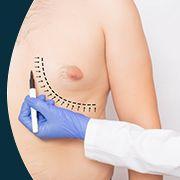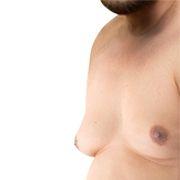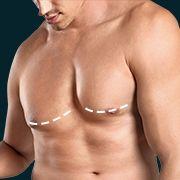Safe and Simple Treatment Methods for Lipoma Removal
In This Article
Safe and Simple Treatment Methods for Lipoma Removal
Jaseela
Updated on March 30, 2024
Medically verified by Dr. Arya
Fact checked by Dr. Pournami

Cosmetic
5 min read
Ever thought about getting rid of lipomas with simple and safe treatment methods?
You are at the right place, and you’re not alone.
Everyone wants to get access to the most safe and simple treatment methods for lipoma to avoid further complications. And to get rid of these lumps.
Mykare Health is here to help you by exploring simple treatment methods for you So that you can say goodbye to those bumps hassle-free.
Let’s learn about it and thereby make a smart decision for your health.
What Is Lipoma?
First thing first, what is lipoma?
Lipomas are harmless lumps made of fat cells under the skin, feeling soft and painless. They're often found on the neck, shoulders, back, arms, and thighs. Though we're not sure what exactly causes them, there might be a genetic connection to it.
Usually, they don't need treatment unless they bother you, affect movement, or impact how you feel about yourself. If necessary, doctors can remove them using meds or surgery.
Lipoma Diagnosis
When figuring out if you have a lipoma, doctors need to be sure it's not something else that looks similar. While lipomas usually stand out because of their unique features, there are some look-alikes, such as epidermal inclusion cysts, sebaceous cysts, neurofibromas, dermatofibromas, liposarcomas, and more.
Normally, doctors can tell it's a lipoma by doing a physical check and talking about your medical history. But sometimes, it's a bit tricky to tell for sure. In those cases, they might use special tests:
Biopsy:
If there's a chance it could be a harmful tumor (like liposarcoma), doctors might suggest a biopsy.
This means taking a tiny piece of the lump and looking at it closely under a microscope. This helps them figure out if it's just a harmless lipoma or something more serious.
Imaging Tests:
Doctors might use tools like ultrasound, MRI, or CT scans to get a good look at the lipoma. These tests show its size, where it is, how deep it goes, and what it feels like. They also help check the tissues around it, like blood vessels.
Not everyone needs these tests; it depends on your situation and if you're dealing with troubling symptoms. Doctors use these tools to be sure about what's going on and decide the best way to help you.
Safe & Simple Treatment Methods For Lipoma Removal
In the initial stages, opting for the removal of lipomas is usually reserved for instances where these benign fatty lumps cause notable symptoms, display rapid growth. Or negatively impact an individual's self-esteem.
The available methods for addressing lipomas encompass a spectrum of choices tailored to the characteristics and location of these lumps.
Firstly, a cautious approach involves observation, particularly when the lipoma is small, painless, and does not present functional or cosmetic concerns.
This method involves monitoring over time without immediate intervention, especially if the lipoma isn't causing any discernible problems.
Here are a few other methods that are simple but very effective.
Steroid injections
For those seeking non-surgical methods, steroid injections become a good option.
While this method aims to reduce the lipoma's size and lessen associated symptoms such as pain and inflammation, it may require multiple sessions for a noticeable reduction in lump size.
Liposuction
Liposuction, a method suitable for smaller lipomas, involves the insertion of a thin tube (cannula) through a small incision, using suction to extract the fatty tissues.
This approach provides a less invasive alternative for those reluctant to undergo surgical procedures.
Usually, people choose surgery to get rid of the lipoma. But, the specific way they do it can change based on where and what the lipoma is like.
In the end, choosing the right treatment comes down to thinking about your specific situation and making sure you get care that fits your needs.
Lipoma Surgery
When compared, surgical excision, commonly referred to as lipoma excision surgery, stands out as one of the most effective means of removal.
This method involves making an incision in the skin, extracting the lump using a scalpel, and closing the incision with sutures.
Procedure
Anesthesia Administration: Before anything else, the medical team ensures your comfort by numbing the area around the lipoma.
If the lipoma is on the larger side, they might opt for more potent anesthesia, either regionally (numbing a larger area) or generally (keeping you completely asleep) to make sure you don't feel any discomfort during the procedure.
Incision and Liposuction:
With the numbing in place, the surgeon makes a precise incision around the lipoma, creating a pathway for the liposuction cannula.
This is a thin tube used to remove the excess fat.
To enhance the efficiency of fat removal, advanced techniques like laser or ultrasound may be employed to break down the fat tissues, making it easier to suction them out.
 9 min read
9 min readThe Advantages of Choosing Mykare Health for Gynecomastia Surgery
 6 min read
6 min readIdentifying The Ideal Age For Gynecomastia Surgery
 6 min read
6 min readPre and Post Gynecomastia Surgery: Essential Things to Know
Get a Callback Now
Once the fat tissues are appropriately emulsified or liquefied, they are safely removed using a vacuum device.
This process ensures thorough extraction of the lipoma contents.
Excision, if Necessary:
If there are residual fat tissues that didn't get suctioned out, the surgeon might use a scalpel for a direct excision.
This step ensures the comprehensive removal of any remaining fat.
Incision Closure and Healing:
After completing the fat removal, the incision is left to heal naturally.
The body's natural healing processes work to close the incision, and over time, the wound fades away, leaving minimal to no visible scarring.
The detailed process of lipoma surgery is designed to effectively eliminate the lipoma while prioritizing patient comfort and best outcomes.
To sum up, when it comes to lipoma removal, exploring safe and simple treatment methods is like finding your personalised journey to feeling better.
Whether it's natural remedies or advanced medical help, these options aim to make the process easy and worry-free.
So, here's to keeping it simple, safe, and getting back to feeling your best without those lipoma hassles!
Lipomas are harmless lumps made of fat cells under the skin, feeling soft and painless. They're often found on the neck, shoulders, back, arms, and thighs. Though we're not sure what exactly causes them, there might be a genetic connection to it.
If there's a chance it could be a harmful tumor (like liposarcoma), doctors might suggest a biopsy. This means taking a tiny piece of the lump and looking at it closely under a microscope.
Doctors might use tools like ultrasound, MRI, or CT scans to get a good look at the lipoma.
Source Links
clevelandclinic



